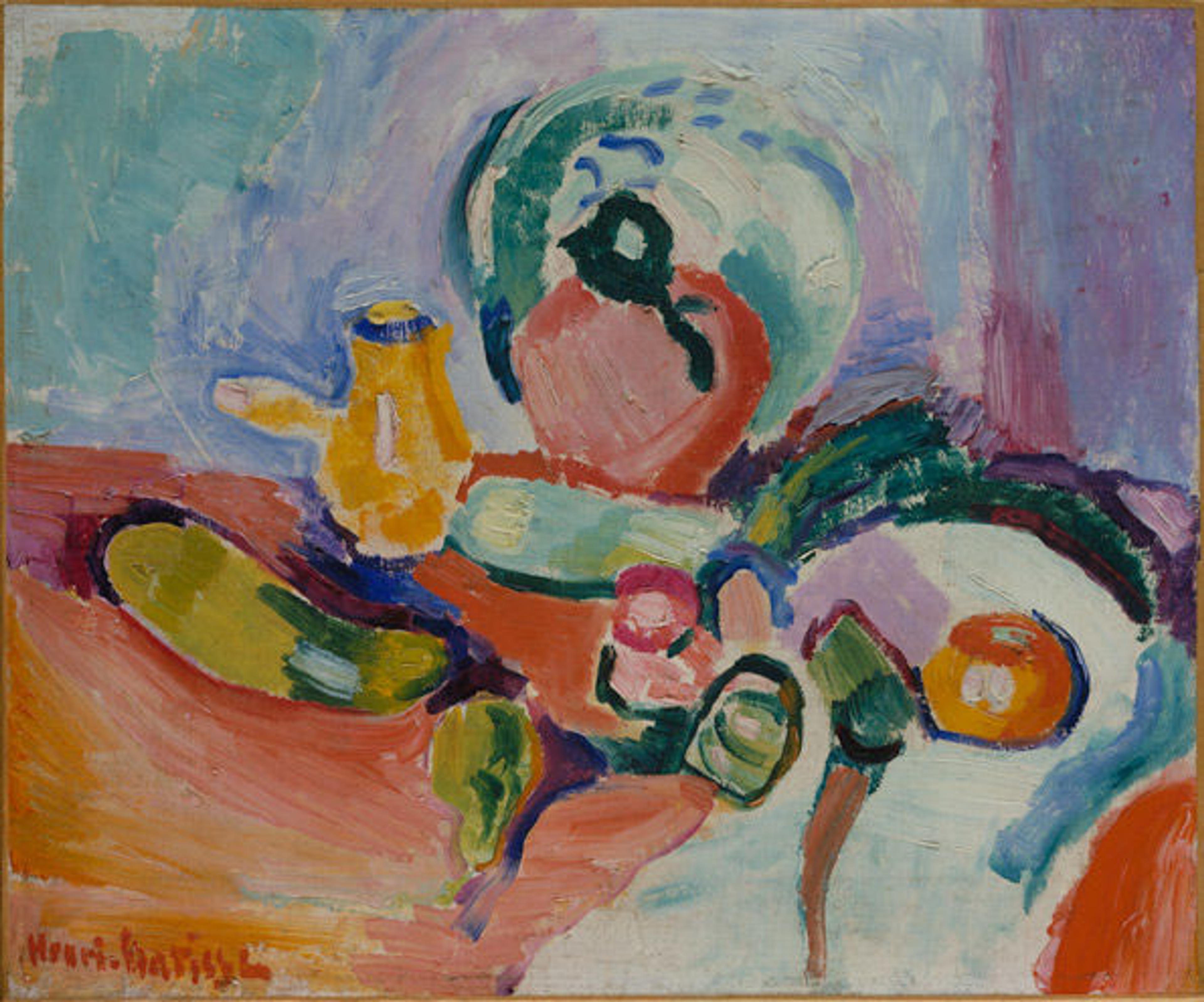
Henri Matisse (French, 1869–1954). Still Life with Vegetables, ca. 1905. Oil on canvas; 15 1/8 x 18 1/8 in. (38.4 x 46 cm). The Metropolitan Museum of Art, New York, Jacques and Natasha Gelman Collection, 1998 (1999.363.38). © 2011 Succession H. Matisse / Artists Rights Society (ARS), New York
«In our recent tour through the Met's galleries with lecturer Deborah A. Goldberg, we looked at Henri Matisse's paintings and Fauvist works by other artists that incorporate techniques such as mixing an enormous array of colors. Although my brain is still processing the information, one of Matisse's methods particularly stood out to me. It's called "non finito."
»
When something is non finito, it is essentially unfinished. For example, the artist may let the blank white canvas show through in order to change the mood of the painting. This idea stuck in my mind because it can be a way to approach all your work, especially schoolwork. The painting Still Life with Vegetables by Henri Matisse is beautiful because it is uncluttered, unpretentious, unassuming, and easy to look at. Often in a humanities class, I find myself sacrificing brevity to give an explanation of everything. We are taught to lay all our cards on the table and that a less comprehensive report leaves more to be desired. Perhaps by not supporting our thesis more than is necessary, we can let people understand our ideas using a few simple, unadulterated points.